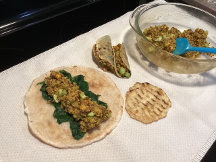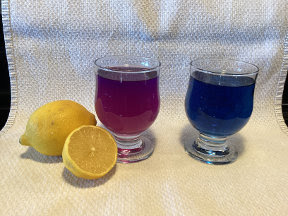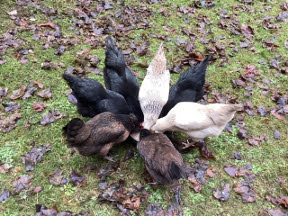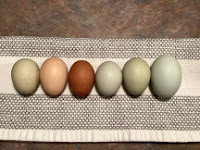 |
| Ataulfo Mangoes at different degrees of ripeness |
 |
| Easy dicing method |
Don't worry about having too many mangoes ripening at once. When they are on sale, I always purchase different degrees of ripeness and more than I can use fresh. I love having a bag of diced, frozen Ataulfo Mango in my freezer for that quick mango 'fix' or new found recipe.
To freeze mango; line a bake sheet with parchment paper or plastic wrap. Then follow the preparation and dicing methods in my previous Blog Post, Exotic Ataulfo Mangoes. Spread out the diced mango on the bake sheet so they are in a single layer and will freeze in individual cubes. When fully frozen, peel mango off of the parchment paper, break apart if necessary and move to a zip type freezer bag. The majority of the frozen fruit should be individual cubes, not a frozen lump. I have purchased frozen mango in the past and was so disappointed with the flavor and quality of the fruit that once was enough. Now every year I get a few cases of the Ataulfo Mangoes when in season, on sale and I know I have a high quality product on hand.
Below is a refreshing, fast, super delicious, gluten-free, vegetarian recipe with quinoa (pronounced keen-waa) and mango... fresh mango is best but if you have frozen to use up, just defrost it first so it does not make the dish too watery.
'Quinoa' is a good source of plant protein and fiber. It is a gluten-free, whole grain carbohydrate, as well as a whole protein, meaning it contains all nine essential amino acids. It is light and fluffy in texture but has the 'whole grain' ability to fill you up.
Served as a side, light lunch, in a wrap or lettuce cups ... fast and refreshing!
1 cup quinoa
2 cups water
2 Tbsp. dry minced onion
1 Tbsp. chicken bouillon powder
 |
| Cool quinoa and gently toss with remaining ingredients |
1/2-3/4 tsp. sea salt
1/4 tsp. turmeric
2 Tbsp. avocado oil
1 Tbsp. white wine vinegar
3/4 tsp. Madras curry powder
1/8 tsp. dry mustard
sea salt and freshly ground pepper
Assembly:
1 cup diced Ataulfo mango
1 cup diced English cucumber
1/4 cup sliced green onions
2 cups mixed mesclun greens
6-8 gluten-free wraps or lettuce cups, optional
Rinse quinoa with cold water to remove the bitter tasting compound that coats the tiny seeds, place in a medium pot with water, dry onion, chicken bouillon, curry powder, sea salt and turmeric. Place over medium heat, bring to a boil. Turn the heat to low, cover and gently simmer for 15 minutes. Remove from the heat and fluff with a fork, cover and let sit another 2-5 minutes. Transfer to a medium bowl and spread out to cool.
Meanwhile make the dressing: whisk the oil, wine vinegar, curry powder and dry mustard in a small bowl to blend. Season dressing with salt and pepper to taste.
 |
| Curried Quinoa Wraps |
Serve as a side dish or for a light lunch serve on a bed of mesclun greens or with lettuce cups. For wraps: divide the greens between 6-8 wraps, spoon the quinoa mixture and wrap firmly closing one or both ends.
Until next time ... Bon Appétit!
Recipe by Sally RaePhotos by Sally Rae

.jpeg)
















